SakenowaRecord your sake experiences and discover your favorites
南部美人Nanbubijin
Flavor Chart®
A chart created from flavor analysis of user comments.

Flavor Tags ®
Tags generated from flavor analysis of user comments.
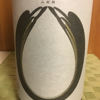


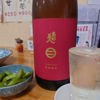

Popular Comments
Yamada Nishiki with 50% polishing ratio.
It has a fruity aroma.
Clean, clean and sweet.
It is easy to match with meals.
The label with the image of rice for sake is also good.
Japanese>English
At home.
This is the third sake we were served at the sake tasting party.
My first Nanbu Bijin. How can a sake from Iwate be called Nanbu?
According to Wikipedia, it's because the location of the brewery was part of the Nanbu domain (Nanbu region) in the Edo period.
My impression is that the alcohol is not strong, but the aroma is a bit characteristic. It's not fruity or grainy... I regret my lack of tasting ability and vocabulary.
On the palate, the sweetness spreads, and the mouthfeel is smooth and the throat feels clear or light.
It is a historical sake and I thought it would be heavier, but it was very easy to drink.
Japanese>English
(^^^)🍶🍶🍶🍶´-
Today is the first time? I opened a bottle of Nanbu Bijin which might be my first time 😊.
The aroma is fresh ginjo 😘The flavor on the palate is juicy with the vigor that is typical of the original sake 😚The aftertaste is moderate bitterness and acidity🥰The sharpness is also good 😆👍✨I think it is the perfect sake for a mealtime drink 😊.
Japanese>English
Brands from Nanbubijin
Nanbubijin結の香
Similar Brands
We analyze the flavors based on everyone's comments and select similar brands.
DewazakuraSimilar Characteristics
UgonotsukiSimilar Characteristics
Location
Kamimachi-13 Fukuoka, Ninohe, IwateOpen in Google Maps
Related Articles
アウトドアシーンにぴったり!南部美人の低アルコール日本酒「KIKI SAKE」が、応援購入サービス「Makuake」にて、11/29(金)まで販売中 | 日本酒専門WEBメディア「SAKETIMES」
 株式会社南部美人(岩手県二戸市)は、モデル・写真家・登山家として活躍するKIKIさんと共同開発した低アルコールSAKETIMES | 日本酒をもっと知りたくなるWEBメディア
株式会社南部美人(岩手県二戸市)は、モデル・写真家・登山家として活躍するKIKIさんと共同開発した低アルコールSAKETIMES | 日本酒をもっと知りたくなるWEBメディア「南部美人」(岩手県)のラベルがリニューアル!伝統を引き継ぎつつシンプルで日本らしいデザインに | 日本酒専門WEBメディア「SAKETIMES」
 株式会社南部美人(岩手県二戸市)は、一部商品のラベルをリニューアルし、伝統ある酒蔵のイメージを引き継ぎつつ、シSAKETIMES | 日本酒をもっと知りたくなるWEBメディア
株式会社南部美人(岩手県二戸市)は、一部商品のラベルをリニューアルし、伝統ある酒蔵のイメージを引き継ぎつつ、シSAKETIMES | 日本酒をもっと知りたくなるWEBメディア人気酒蔵セミナー「世界に挑戦する!南部美人」が「キャプラン・ワインアカデミー東京青山教室」にて6/23(土)に開催 | 日本酒専門WEBメディア「SAKETIMES」
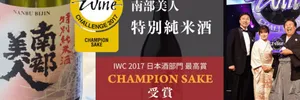 「キャプラン・ワインアカデミー東京青山教室」にて人気酒蔵セミナー「世界に挑戦する!南部美人」が6月23日(土)SAKETIMES | 日本酒をもっと知りたくなるWEBメディア
「キャプラン・ワインアカデミー東京青山教室」にて人気酒蔵セミナー「世界に挑戦する!南部美人」が6月23日(土)SAKETIMES | 日本酒をもっと知りたくなるWEBメディアTimeline
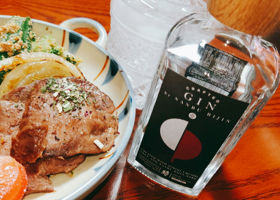
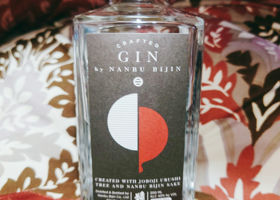
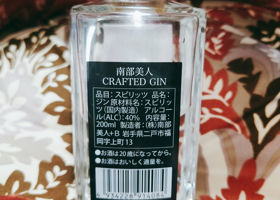

yu yu
Nanbu Bijin Craft Gin
It is not sake, but... a gin from a sake brewery!
Anyway, the aroma is amazing!
But when you drink it, it's so refreshing
It's like a refreshing drink.
⬇Homepage excerpt⬇
Nanbu Bijin's new challenge, craft gin
The new coronavirus has reduced demand for sake,
demand for sake rice has also been greatly affected.
In order not to cause any inconvenience to the farmers who have been working with us
We have taken on the challenge of producing a new type of sake,
We have taken on the challenge of producing a new type of sake.
Nanbu Bijin's new craft gin is made with
Ninohe is famous for its botanicals,
Ninohe is the largest producer of this botanical in Japan,
UNESCO's Intangible Cultural Heritage and Japan's Heritage.
It is the first gin in Japan to use lacquer.
This is the first gin in Japan to use lacquer.
What was your creative point this time?
We did not use the lacquer tree as it is,
We roasted it once and used it.
The roasting gives it a savory aroma and a smoky flavor,
The fragrance of the lacquer wood is also smoky.
Fresh and spicy from juniper berries,
The woody and smoky aroma comes from the lacquer,
The lingering aftertaste is long and enjoyable.
It can be enjoyed chilled and straight, or watered down
You can also enjoy a different flavor by adding water.
Alcohol content: 40%.
Japanese>English
Nanbubijinビューティーシリーズ 純米大吟醸 酒未来


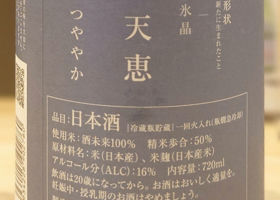
atsukisan
Capacity 720ml
Manufacturer: Nambu Bijin (Iwate Prefecture)
Specific name: Junmai Daiginjo
Ingredients: rice, rice malt
Nama/Hiirei-shu (with heat treatment)
Store in a cool, dark, and quiet place.
Manufacturer's website http://www.nanbubijin.co.jp/
Sweetness/Slightly dry
Rice:Sake Mirai
Rice polishing ratio:50
Alcohol content: 16%.
Sake meter degree: +1.4
Acidity: -2
Japanese>English
aya
Kita24jyo Couscous
Japanese>English
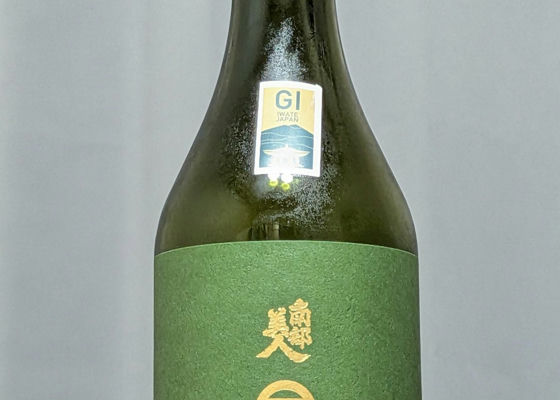
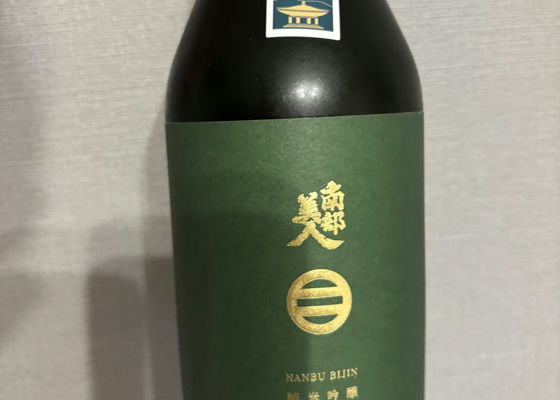
ジャポーネ
today's dinner
What's nice is that it's so easy to buy at the supermarket!
I think I liked the special junmai better because it was more refreshing!
On the third day, I felt the sweetness increased!
Japanese>English

ひなたぼっこ
🍶🍶👺👺


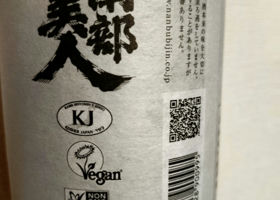
つっつっつっ
2618
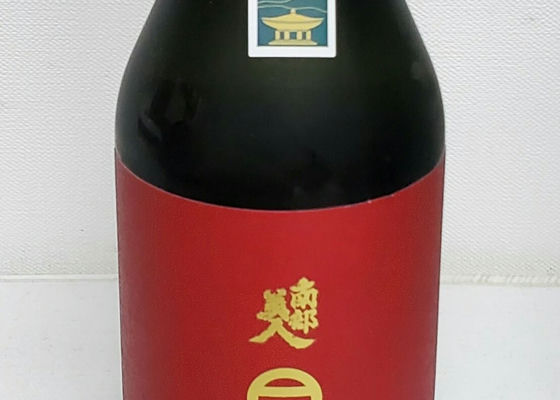
ハメジ
It has a fruity aroma, a delicious rice flavor, and a clean and crisp finish. The sake is well-balanced and goes well with all dishes.
Personally, I drank Nanbu Bijin Junmai Ginjo, but I prefer this one.
This sake won the IWC Champion Sake 2017.
Japanese>English

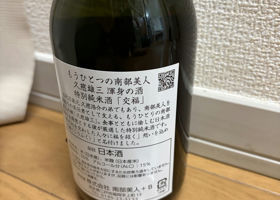


teru04aug
昨年の東北旅行でら買ってきたもの。
さっぱりした飲み口。
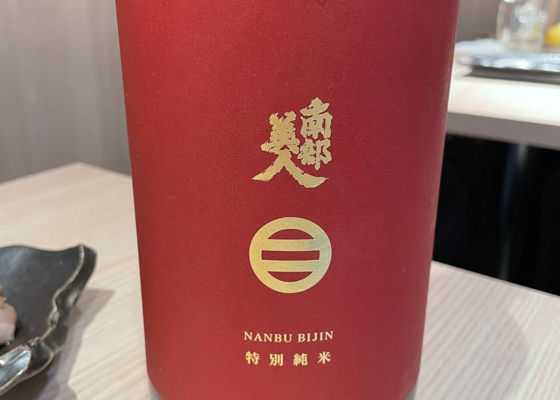


Nanbubijin純米酒 秋あがり


まつちよ
Nanbu Bijin no Autumn Agari.
The top aroma is fresh and sweet.
When you put it in your mouth, it has a clear sweetness with a hint of acidity and a good amount of flavor.
It is a good sake 😊.
It was delicious with a refreshing taste that is typical of Nanbu Bijin 🍶✨️
Japanese>English
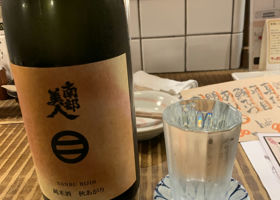

choposhika
Went to Sendai to celebrate my grandfather's US jubilee!
My wife and I went to an izakaya (Japanese-style pub) for the first time in several years, leaving the kids with my grandma and grandpa.
I was very happy because we had not been out together since the birth of our child.
It was a nice lemon 🍋.
Japanese>English
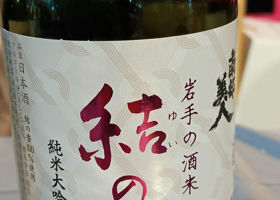
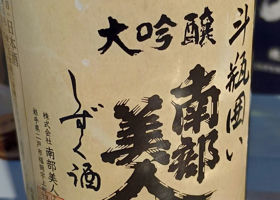
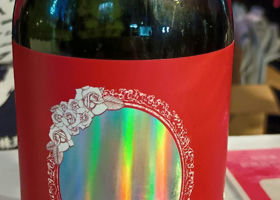
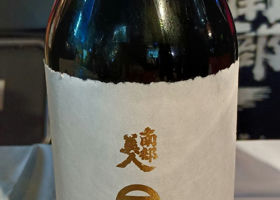
酒は舐める程度
Nanbu Bijin Drinking Comparison
Japanese>English